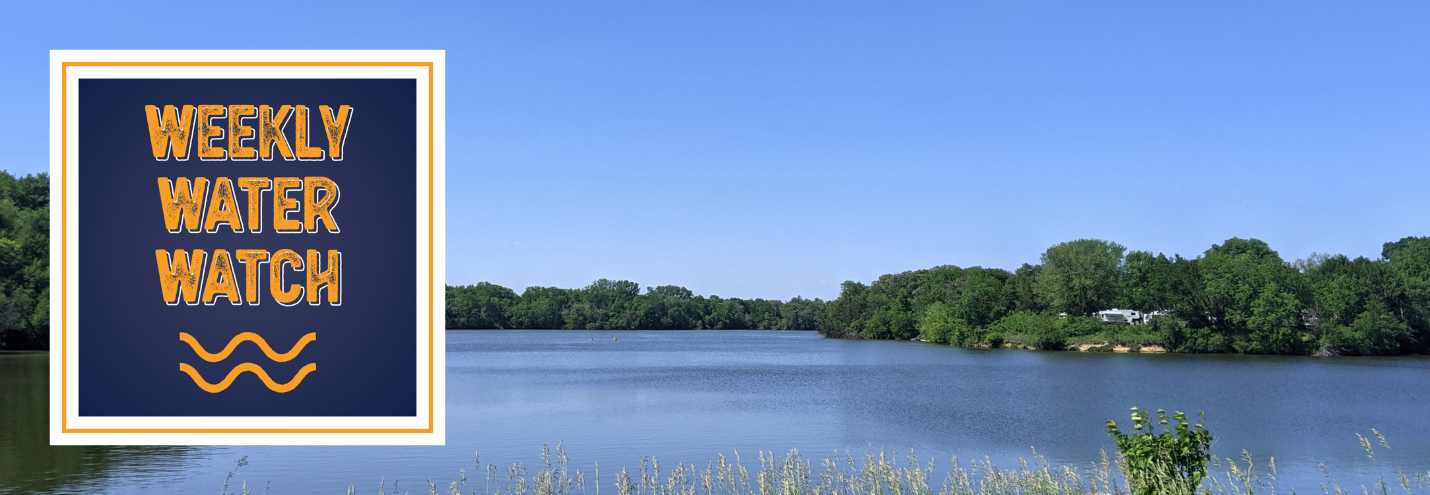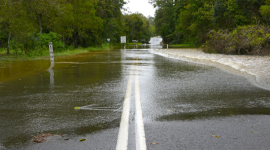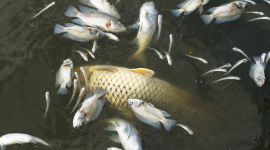|  | | 14 Beaches with an E. coli Advisory:
Beed’s Lake Beach (Hampton, Franklin County, IA)*
Big Creek Beach (Polk City, Polk County, IA)*
Clear Lake Beach (Clear Lake, Cerro Gordo County, IA)*
Crandall's Beach (Big Spirit Lake, Spirit Lake, Dickinson County, IA)*
Emerson Bay Beach (West Okoboji Lake, Milford, Dickinson County, IA)*
Lake Ahquabi Beach (Indianola, Warren County, IA)*
Lake Darling Beach (Brighton, Washington County, IA)*
Lake of Three Fires Beach (Bedford, Taylor County, IA)*
McIntosh Woods Beach (Clear Lake, Ventura, Cerro Gordo County, IA)*
Nine Eagles Beach (Davis City, Decatur County, IA)*
North Overlook Beach (Lake Red Rock, Pella, Marion County, IA)**
Sugar Bottom Campground Beach (Coralville Lake, Coralville, Johnson County, IA)**
Union Grove Beach (Gladbrook, Tama County, IA)*
West Overlook Beach (Coralville Lake, Coralville, Johnson County, IA)** 1 Beach with a Microcystin Advisory:
Lake Anita Beach (Anita, Cass County, IA)* 1 City and County Beach exceeds the state’s advisory threshold for E. coli.*
View the map on our website to see where. Note: Lake Keomah has been completely drained for lake renovations activities and the beach is closed for the remainder of the season. Oak Grove Beach at Saylorville Lake remains closed due to flooding. DNR advises to avoid the Des Moines River due to wastewater discharge. *Data from the Iowa DNR State Park Beach Monitoring Program
**Data from the U.S. Army Corps of Engineers, Rock Island District |
| Why We Shouldn't Have Lawns |
| The National Wildlife Federation, an organization devoted to protecting and restoring wildlife and ecosystems, often comments on how people are at the epicenter of environmental stewardship. From carbon management in Louisiana to ranch restoration in Montana, their blog offers a wealth of information. In this issue of Weekly Water Watch, we're highlighting their piece on lawn management and its impacts to the ecosystem. This past week, Iowans saw heat indexes skyrocket to over 100 degrees. These recent heat waves may have taken a toll on your outdoor lawns - but at what cost? While sprawling, manicured lawns might be the American standard, that doesn’t mean they are the best choice, especially in unprecedented climate events. Lawncare treatments, such as pesticides and fertilizers, are especially damaging to native ecosystems and the wildlife they support. These chemicals damage soil microbiomes, making the area less resistant to extreme weather conditions, and also degrade local water systems. While altering the existing ecosystem, pesticides have long been proven to cause detrimental impacts on human health as they absorb into waterways and wind up under our tap. Even without chemical treatments, lawns themselves can still have negative impacts on the environment. In major flooding events, grassy lawns' shallow root systems allow water to rip through the area. This not only contributes to runoff into local water systems, but also increases the risk of erosion and property damage. By contrast, native and flood-resistant plant species are characterized by their deep root systems that can weather periods of both storms and drought, which also aid in water purification. |
| |
|
| |  | |  | Recovery from Northwest Flooding Communities in northwest Iowa are slowly rebuilding after unprecedented flooding this summer. High water backed up sewage systems, power lines went down, and streets became unnavigable. In response, Governor Reynolds announced a disaster proclamation and President Biden issued a disaster declaration for several northwestern counties. These formal disaster declarations make state and federal funding available for costs associated with relocation and rebuilding, including temporary housing, home repairs, business recovery loans, and debris removal. In August, Iowa Public Radio highlighted the acts of kindness spread by the communities affected to assure that residents were safe, housed, and fed. In addition to services from FEMA and Red Cross, community members volunteered tirelessly. Residents assisted where they could, from removing wreckages and rebuilding homes, to providing childcare and opening up shelters. Amanda Johnson, a resident of Spencer, stated, "We realized pretty quickly that we were it, and we looked around at each other and realized that we needed to take care of each other.” Learn more about the historic northwest Iowa floods and responses from communities on Iowa Public Radio's website. |
|
|
 | IIJA Funding for Extreme Events As featured on an earlier edition of Weekly Water Watch, Hurricane Beryl became the earliest Category 5 hurricane on record with winds exceeding 160 miles per hour. Reaching the United States, Hurricane Beryl subsided into a Category 1 hurricane, but caused dozens of tornados in its wake. AccuWeather estimates total storm damages from Hurricane Beryl from $28 billion to $32 billion. To help communities recover from extreme flooding, Congress established the Flood Mitigation Assistance (FMA) grant program in 1994. The FMA program, administered by the Federal Emergency Management Agency (FEMA), offers communities pre-disaster funding to advance flood mitigation efforts. The Biden Administration’s Infrastructure Investment and Jobs Act (IIJA) appropriated $3.5 billion to the FMA program with additional allocations through 2026 - this roughly quintuples the available funding from the previous five years. This funding is also aligned with the Biden Administration's Justice40 Initiative, making it easier for disadvantaged communities to afford large-scale resiliency and recovery projects. Learn more about the IIJA and additional funding to hurricane relief efforts on the Water Program Portal. | |
|
|
 | Nishnabotna Fish Kill: What Now? In March, the Iowa DNR learned that approximately 265,000 gallons of liquid nitrogen fertilizer was discharged into a drainage ditch leading to East Nishnabotna River, eventually reaching all the way to the Missouri River. The DNR reported no living fish in the East Nishnabotna River south of Red Oak. Last week, the NEW Cooperative determined that the spill was due to the "unseasonably warm weekend" that allowed fertilizer to flow out of their fertilizer storage tank. Employees were under the impression that the ammonium nitrate remained crystalized from the winter season, and accidentally left a valve open off the distribution tank. This allowed the fertilizer to spill into a drainage ditch leading to the East Nishnabotna until the following Monday morning when workers returned. The Environmental Protection Commission referred the case to the Iowa Attorney General's office for litigation after the DNR determined that the maximum penalty of $10,000 did not meet the value of loss. The total value of the fish is about $226,000, DNR records show. Ecosystem services provide benefits like resiliency to natural disasters, pollination of food crops, and water purification, among others. Now, it's in the hands of the Attorney General's office to determine how valuable the East Nishnabotna's ecosystem is. The Attorney General's office has a policy not to comment on pending investigations. |
|
|
| |  | | What's new in Iowa's water news: |
|
|
| | |  | | | Iowa Environmental Council
505 Fifth Ave., Suite 850
Des Moines, Iowa 50309-2317
515-244-1194 | iecmail@iaenvironment.org |
|
|
|
|
|